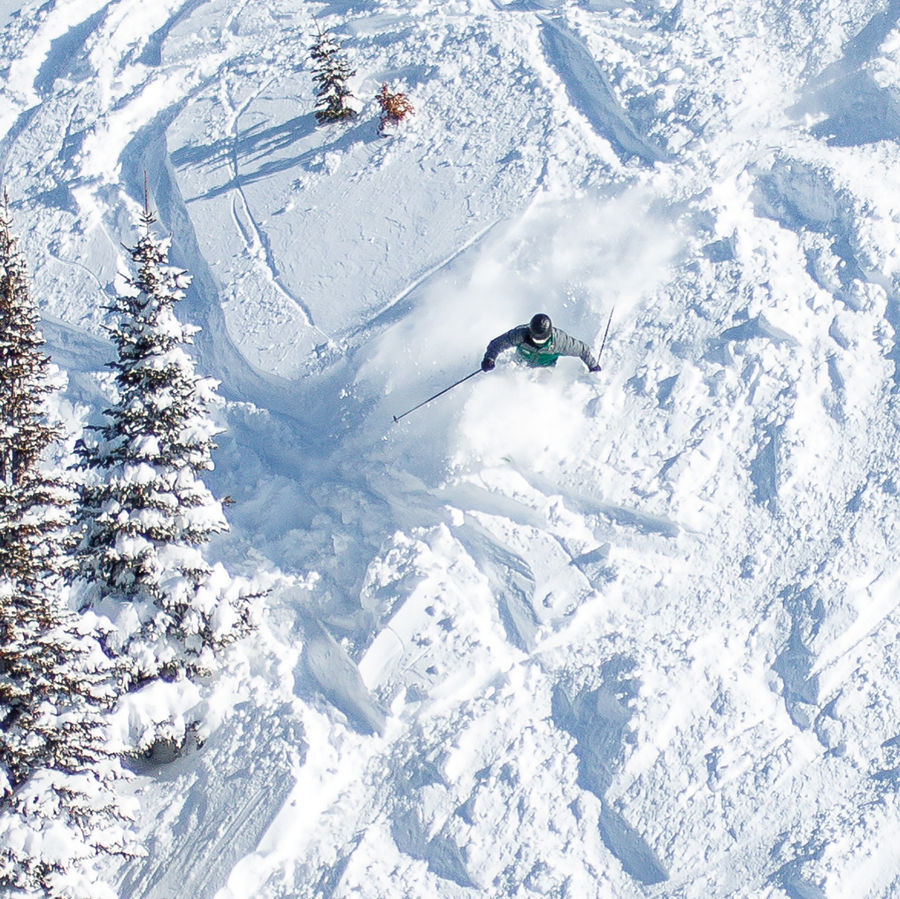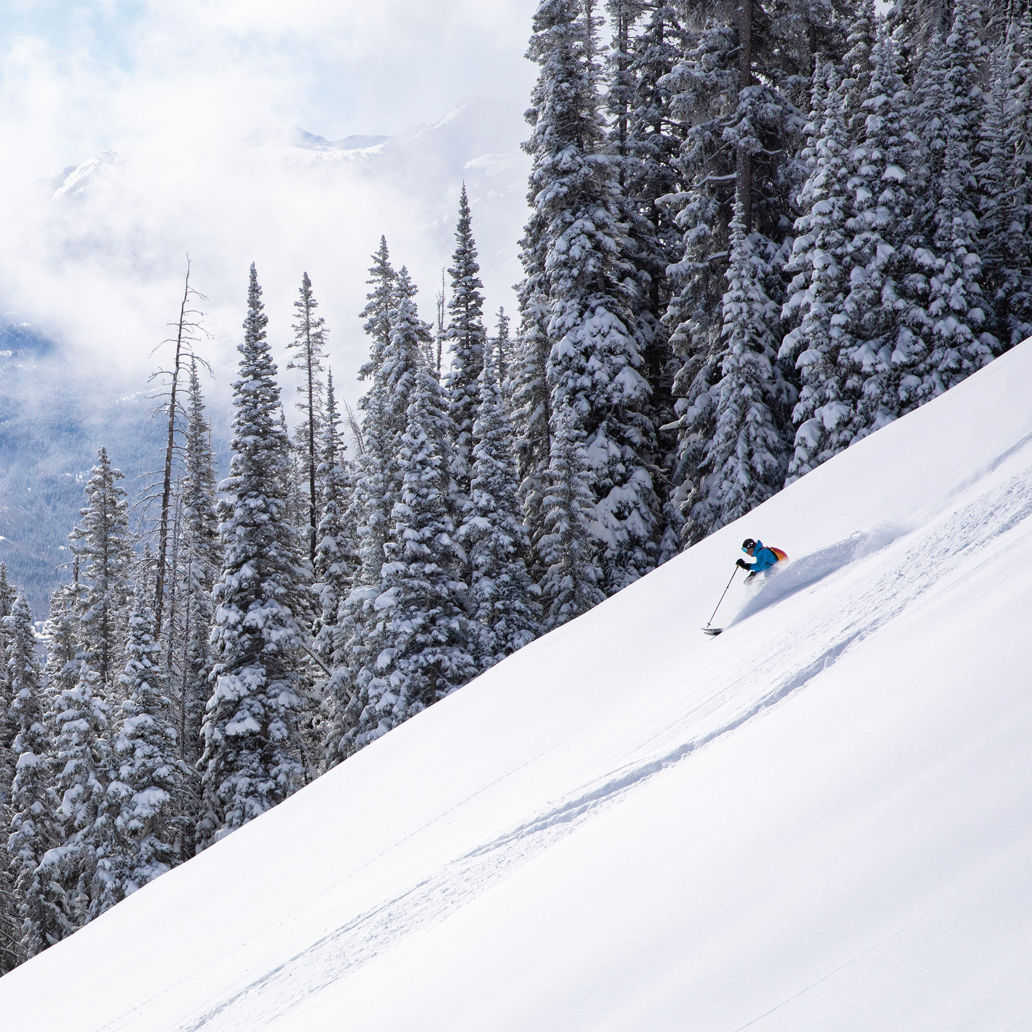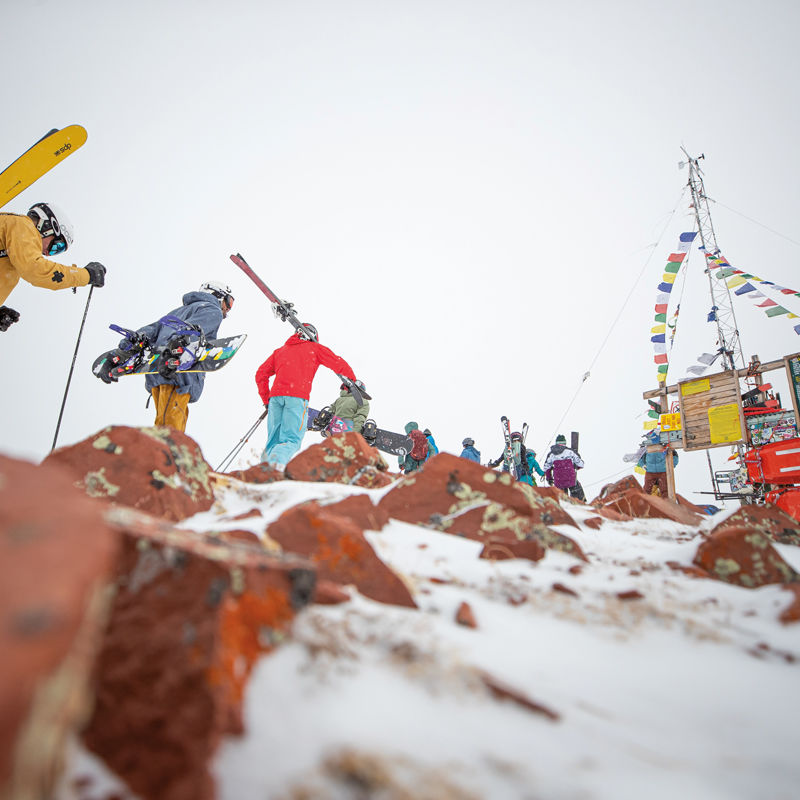Snowmass Ski Area Has It All
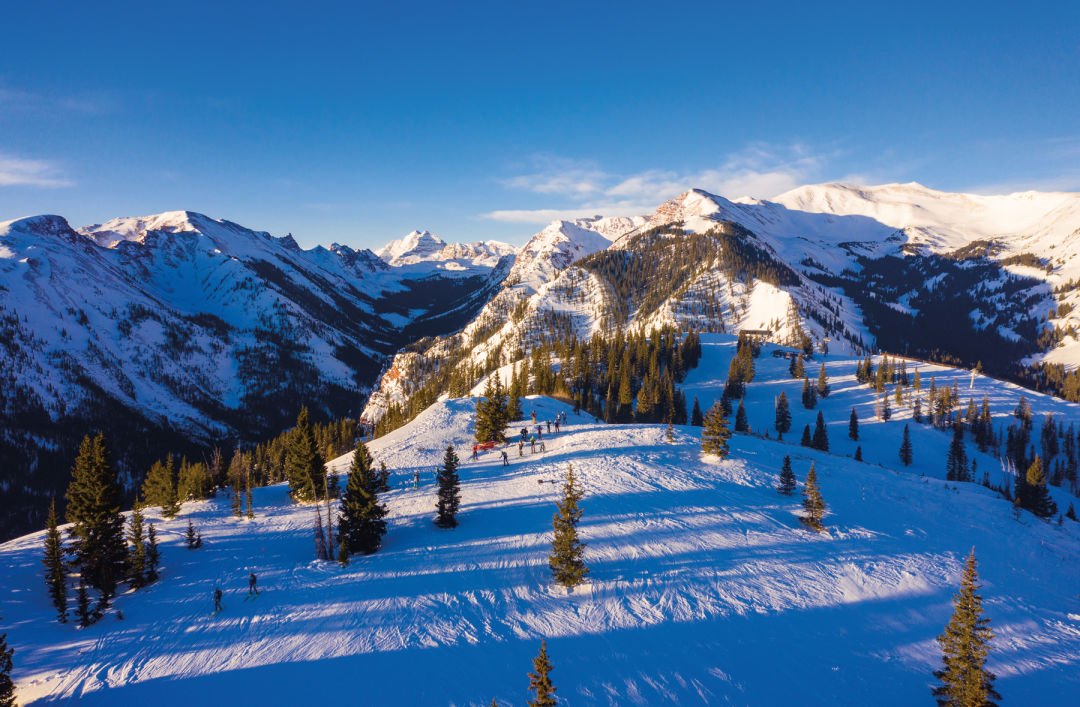
The top of Elk Camp, with the Maroon Bells at left in the background
Image: Jeremy Swanson
Snowmass is Aspen’s most popular ski area, and for good reason. It’s a massive playground ( 3,339 acres with a 4,400-foot vertical drop) for skiers and snowboarders of all abilities. Yes, it’s heaven for intermediates, but the area also has some of Colorado’s best expert terrain, as well as great trails for beginners to explore. We’ve come up with a couple of strategies for exploring the mountain: one for a family of intermediate skiers, one for a posse of thrill-seeking experts.
Game for Elk (intermediate)
With almost half of its terrain rated blue square, Snowmass is an intermediates’ nirvana. But even experts enjoy the exhilaration of carving turns on long, consistently pitched, regularly groomed runs like Green Cabin and Sneaky’s.
The Elk Camp gondola is one of the most efficient ways to get up the mountain. Warm up with a run down Funnel Bypass, a steeper green, then reboard the gondola at its midway loading point near the top of Assay Hill. Your next run is Cascade, a meandering groomed trail that descends more than 1,700 vertical feet in the lightly trafficked Two Creeks area—you may see more birds in the thick glades that border the run than other skiers.
You’ll have about nine minutes to rest your quads on the ride up the Two Creeks chair, then another seven minutes of chill time on the Elk Camp lift. Catch your breath at the top of Elk Camp (elevation 11,325 feet) while admiring the view of the Maroon Bells. Then start exploring the five wide, moderately pitched runs that fan off the top: Sandy Park, Gunner’s View, Bear Bottom, Grey Wolf, and Bull Run.
Feel the Burn (intermediate)
If you caught lunch on the early side at Elk Camp restaurant, check a grooming report to see if the Noon Groom has taken place nearby. This daily dose of slope maintenance on a different intermediate run each day serves up the type of pristine corduroy you’d normally only find first thing in the morning.
Then head to the Big Burn chair, and spend the afternoon exploring its nooks and crannies. A favorite area among Snowmass regulars, the Burn offers a little of everything: high-speed cruising down Sneaky’s or Whispering Jesse, easy bumps on Jack of Hearts, well-spaced trees between runs and along Mick’s Gully. The Burn’s name comes from an 1880s forest fire, not the way your legs will feel after multiple laps here.
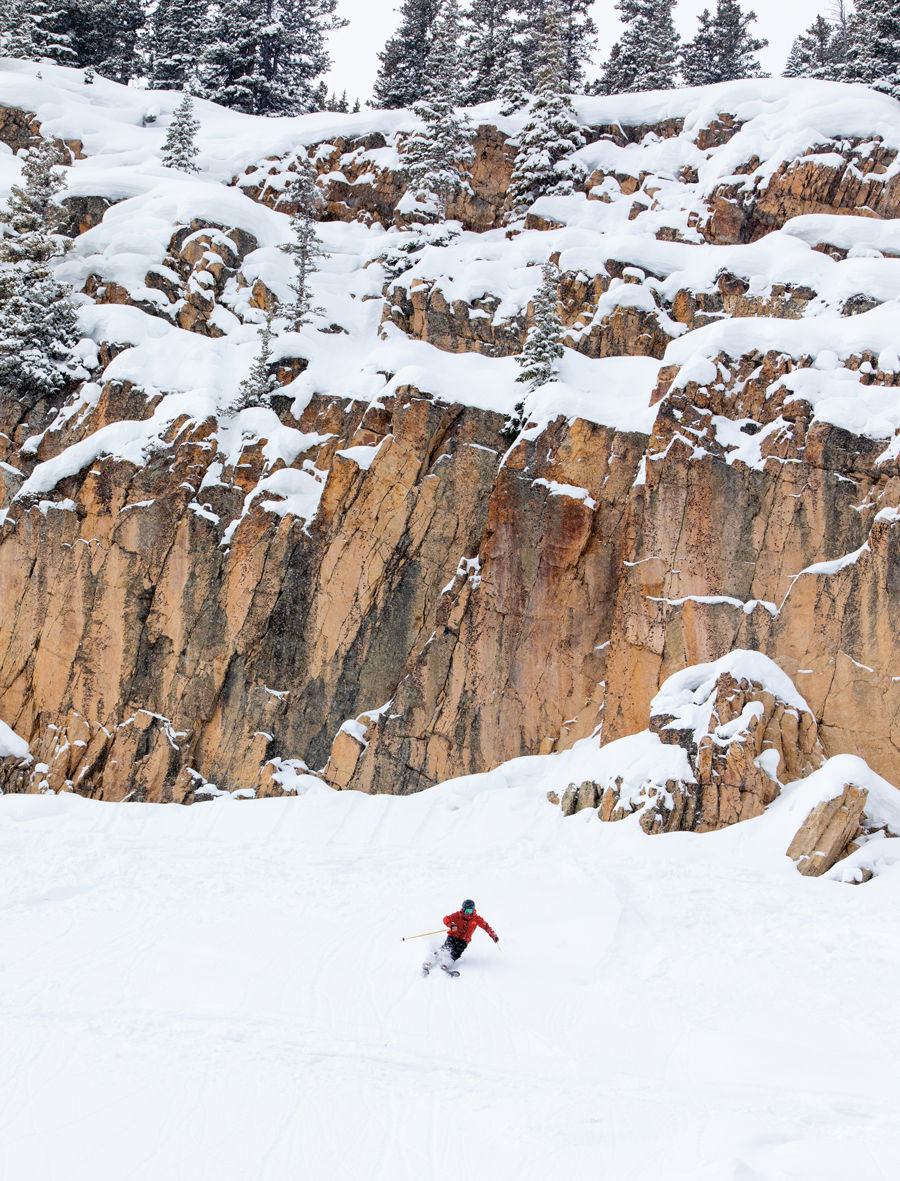
Just another powder day in the steeps
To the peak! (expert)
There are two main areas of expert terrain at Snowmass: Hanging Valley and the Cirque/Rock Island. Both start at the top of the mountain, so on a powder day you’ll want to get up the hill as quickly as you can in the morning. Take the Village Express lift to Sam’s Knob, and warm up with a cruise down Max Park and Trestle before taking the Sheer Bliss lift to the top.
Odds are that Snowmass’s upper double-black terrain won’t open right away, allowing for the patrol to do avalanche control, so in the meantime make a lap down the glades of West Face or Free Fall to the natural halfpipe of Garrett Gulch. When the upper runs open, ride Sheer Bliss and tackle the vertiginous cornice of Gowdy’s and the cliff-studded steeps of Rock Island before they get tracked up.
For the last run of the morning, take the Cirque poma to the top, and cut across the high traverse to reach Hanging Valley Wall. Strut your stuff on the steep, high-profile Headwall, followed by Wall Two, a vast, open powder field. Cruise down past Elk Camp to the Alpine Springs lift; after riding it up, duck into High Alpine restaurant for a quick break.
Another brick in the Wall (expert)
After lunch, take the High Alpine chair to return to the Headwall, this time via the short traverse and hike from the top of the lift. Look for soft snow in the trees on the right or amid the open powder fields on the left, then angle hard right at the bottom to ski Lower Ladders, which has a nice mix of technical terrain and overlooked tree stashes. Ride Alpine Springs and High Alpine again, make the hike, and ski Roberto’s, a steep gully. At the bottom, stay left above Wall Two to reach the snow-retaining woods of Cassidy’s and Willy’s.
On your next lap, skip the hike and ski Baby Ruth, a tree-choked, elevator-shaft-steep chute, to the angled meadows of Glades One, Two, or Three. Then, if your legs are up for it, make one more trip up High Alpine after the Wall has closed and look for lingering freshies amid the boulders and hollows of Hanging Valley Glades.
Child’s play
Snowmass also loves its little skiers, so much that it has a dozen-plus special trails for them. Our top three picks:
Prospector’s Trail Wind through the trees on this narrow path off Adams’ Avenue, flanked by wooden cutouts of miners and their gear, and feel like you’re miles away from the ski area.
Hi Di Hi Woods When the trail forks in the middle, stay left to ski through the Bat Cave tunnel for a few spooky seconds.
Ice Age Trail This pathway between Scooper and Dawdler leads past life-size panels of a giant sloth, a woolly mammoth, a mastodon, and other ancient creatures.
Heads up this season
A new high-speed six-pack replaces the old quad lift up Big Burn...The check-in area at the Treehouse Kids’ Adventure Center was remodeled to expedite flow...To the dismay of legions of loyal fans, Gwyn’s High Alpine served its final chicken Brunswick stew and elk medallions last winter, as Aspen SkiCo took over the lease; this winter the cafeteria, now known simply as High Alpine, will operate, while the sit-down Alpin Room will wait until next winter to debut...Find heated outdoor dining tents at High Alpine, Elk Camp, Ullrhof, Lynn Britt Cabin, and Two Creeks Café...Up 4 Pizza atop the Big Burn is not operating this season—alas, no warm chocolate-chip cookies to take the edge off a cold day.
